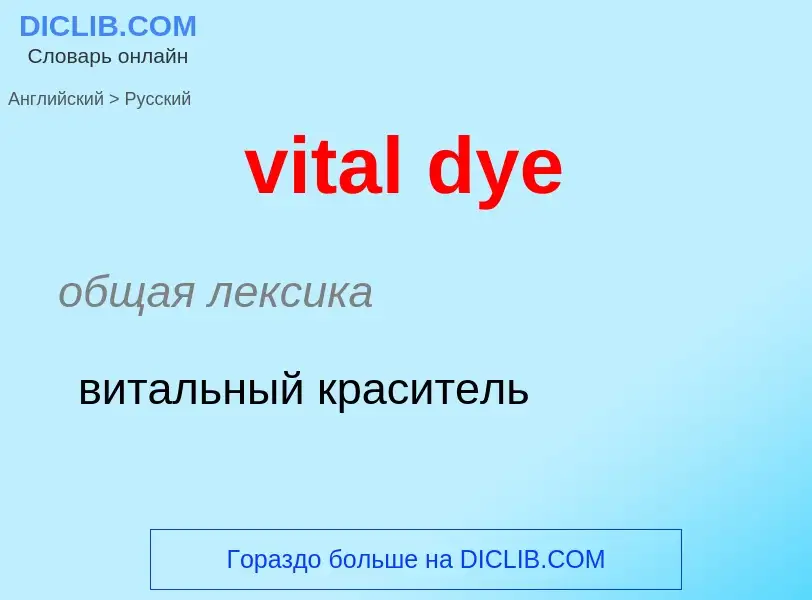Translation and analysis of words by ChatGPT artificial intelligence
On this page you can get a detailed analysis of a word or phrase, produced by the best artificial intelligence technology to date:
- how the word is used
- frequency of use
- it is used more often in oral or written speech
- word translation options
- usage examples (several phrases with translation)
- etymology
vital dye - translation to russian
общая лексика
витальный краситель
[dai]
общая лексика
краситель
красящее вещество
красить
окрашивать
подкрашивать
краска
красящий
нефтегазовая промышленность
сигнальная цветная присадка к бензину
красить, подкрашивать
Смотрите также
существительное
[dai]
общая лексика
краска
краситель
красящее вещество
окраска
цвет
глагол
общая лексика
(dyed ‹-{dai}d›) красить
окрашивать
окрашиваться
краситься
принимать краску
красить, окрашивать
принимать краску, окрашиваться
синоним
Definition
Wikipedia

Staining is a technique used to enhance contrast in samples, generally at the microscopic level. Stains and dyes are frequently used in histology (microscopic study of biological tissues), in cytology (microscopic study of cells), and in the medical fields of histopathology, hematology, and cytopathology that focus on the study and diagnoses of diseases at the microscopic level. Stains may be used to define biological tissues (highlighting, for example, muscle fibers or connective tissue), cell populations (classifying different blood cells), or organelles within individual cells.
In biochemistry, it involves adding a class-specific (DNA, proteins, lipids, carbohydrates) dye to a substrate to qualify or quantify the presence of a specific compound. Staining and fluorescent tagging can serve similar purposes. Biological staining is also used to mark cells in flow cytometry, and to flag proteins or nucleic acids in gel electrophoresis. Light microscopes are used for viewing stained samples at high magnification, typically using bright-field or epi-fluorescence illumination.
Staining is not limited to only biological materials, since it can also be used to study the structure of other materials; for example, the lamellar structures of semi-crystalline polymers or the domain structures of block copolymers.


![hematoxylin and eosin (H&E)]]. hematoxylin and eosin (H&E)]].](https://commons.wikimedia.org/wiki/Special:FilePath/Eosinophilic, basophilic, chromophobic and amphophilic staining.png?width=200)
![Example of [[negative staining]] Example of [[negative staining]]](https://commons.wikimedia.org/wiki/Special:FilePath/HexLamMic phases.jpg?width=200)

